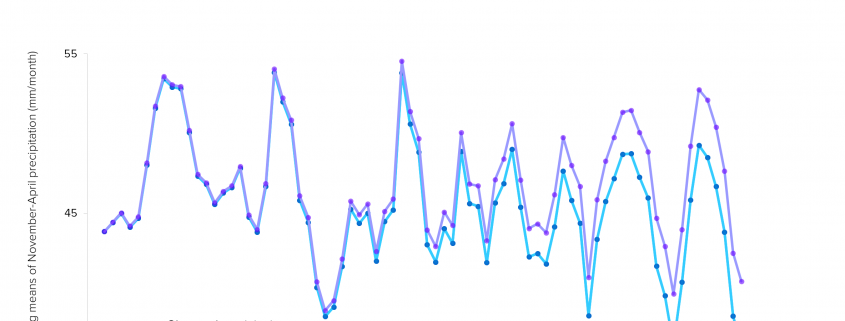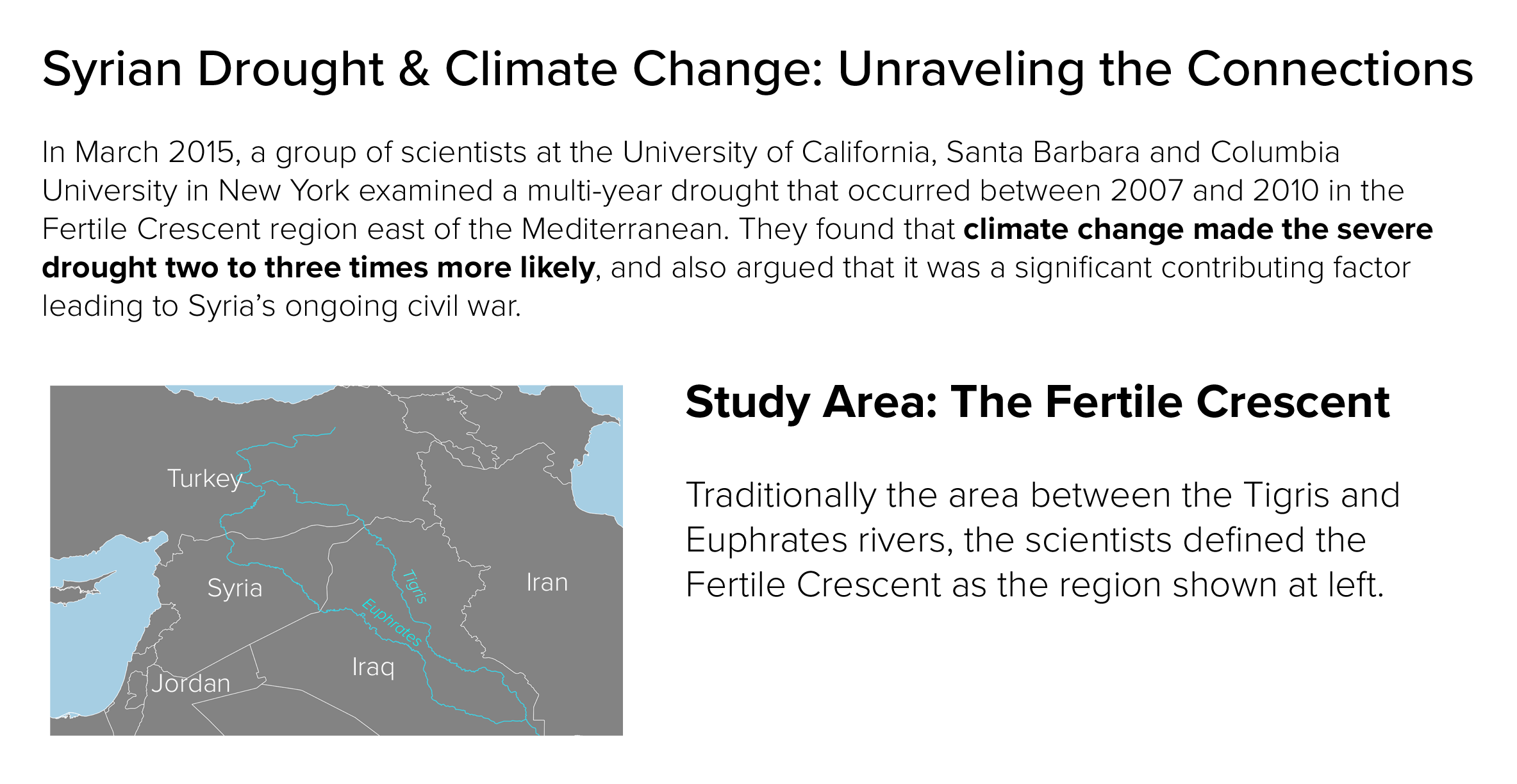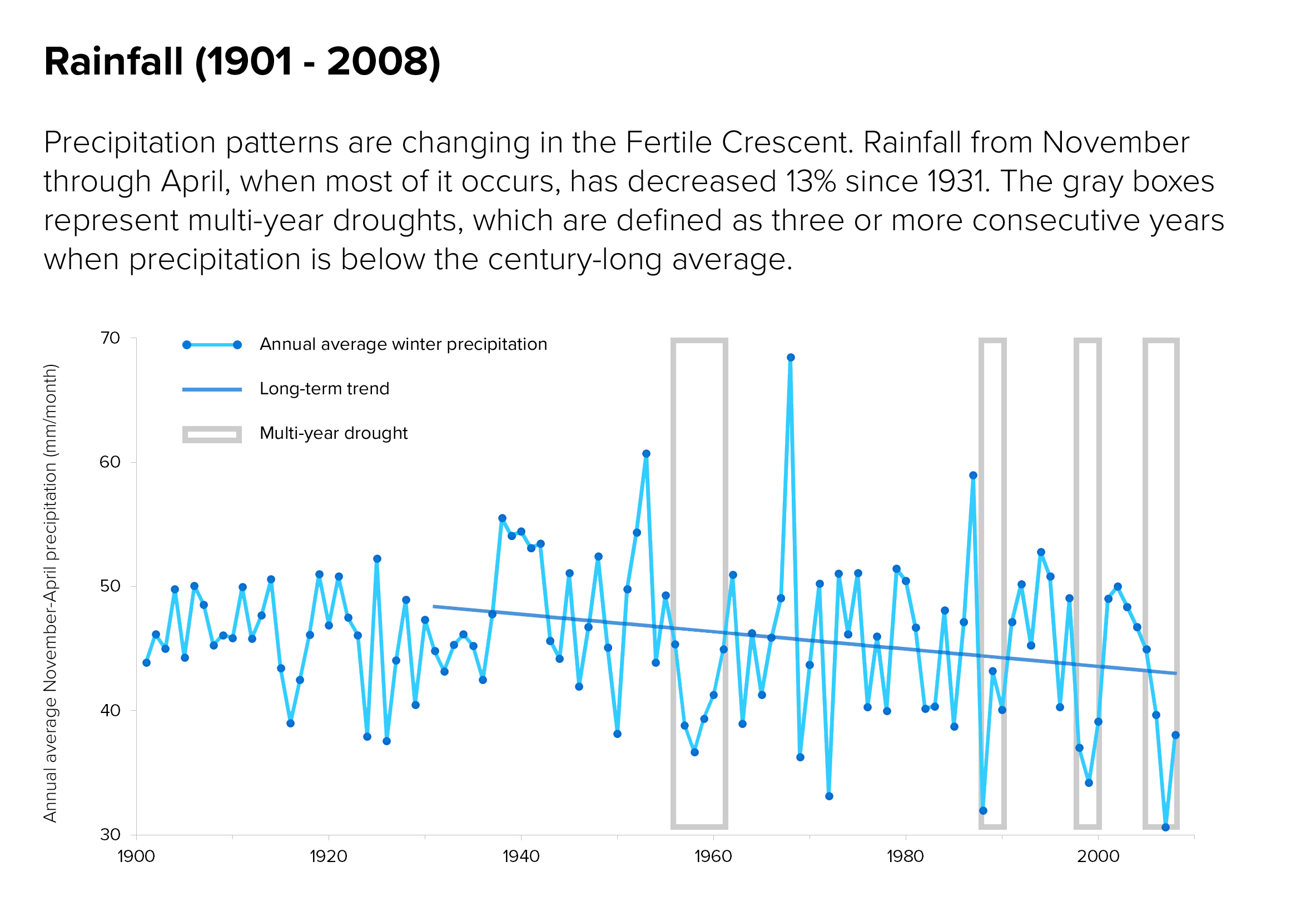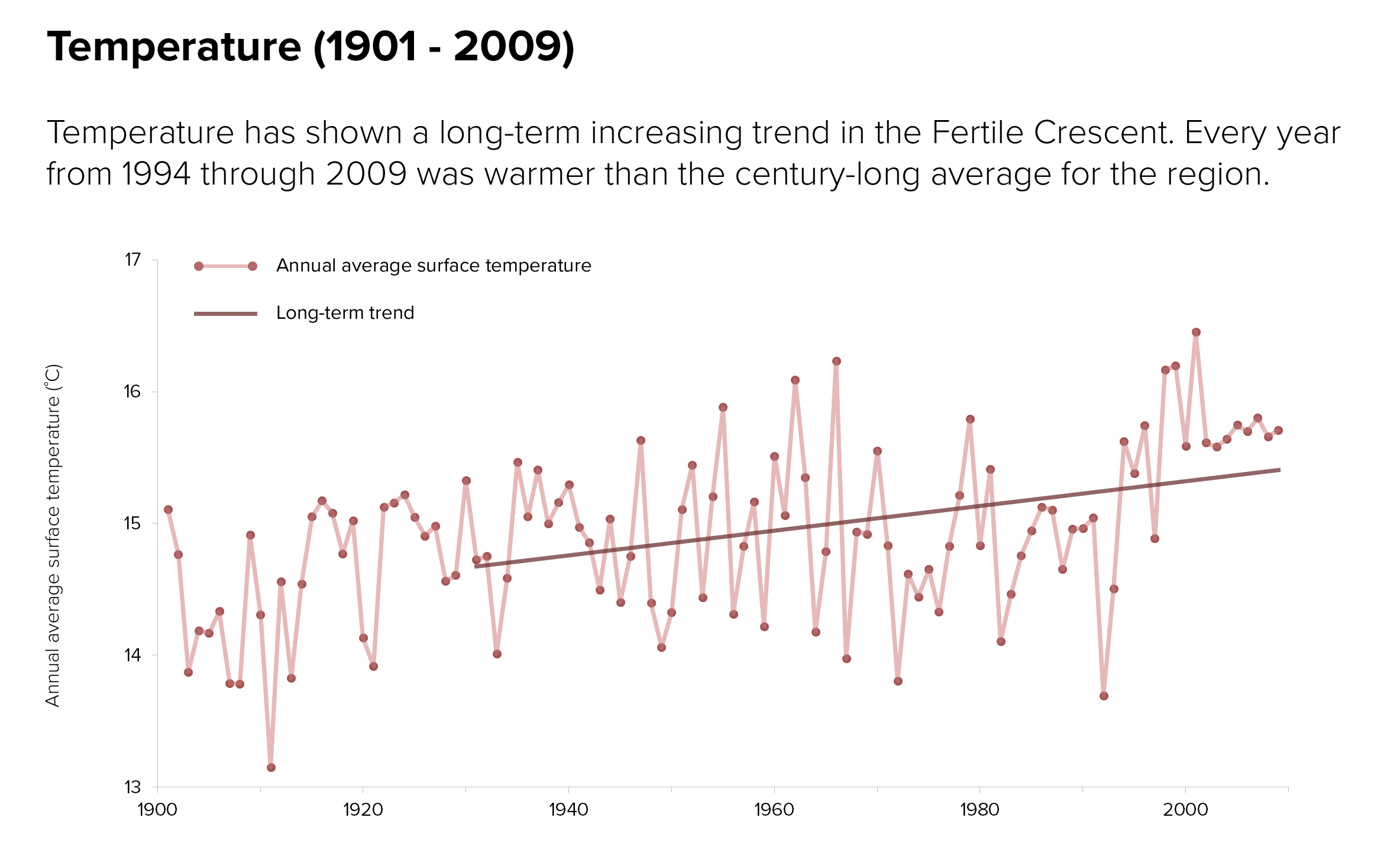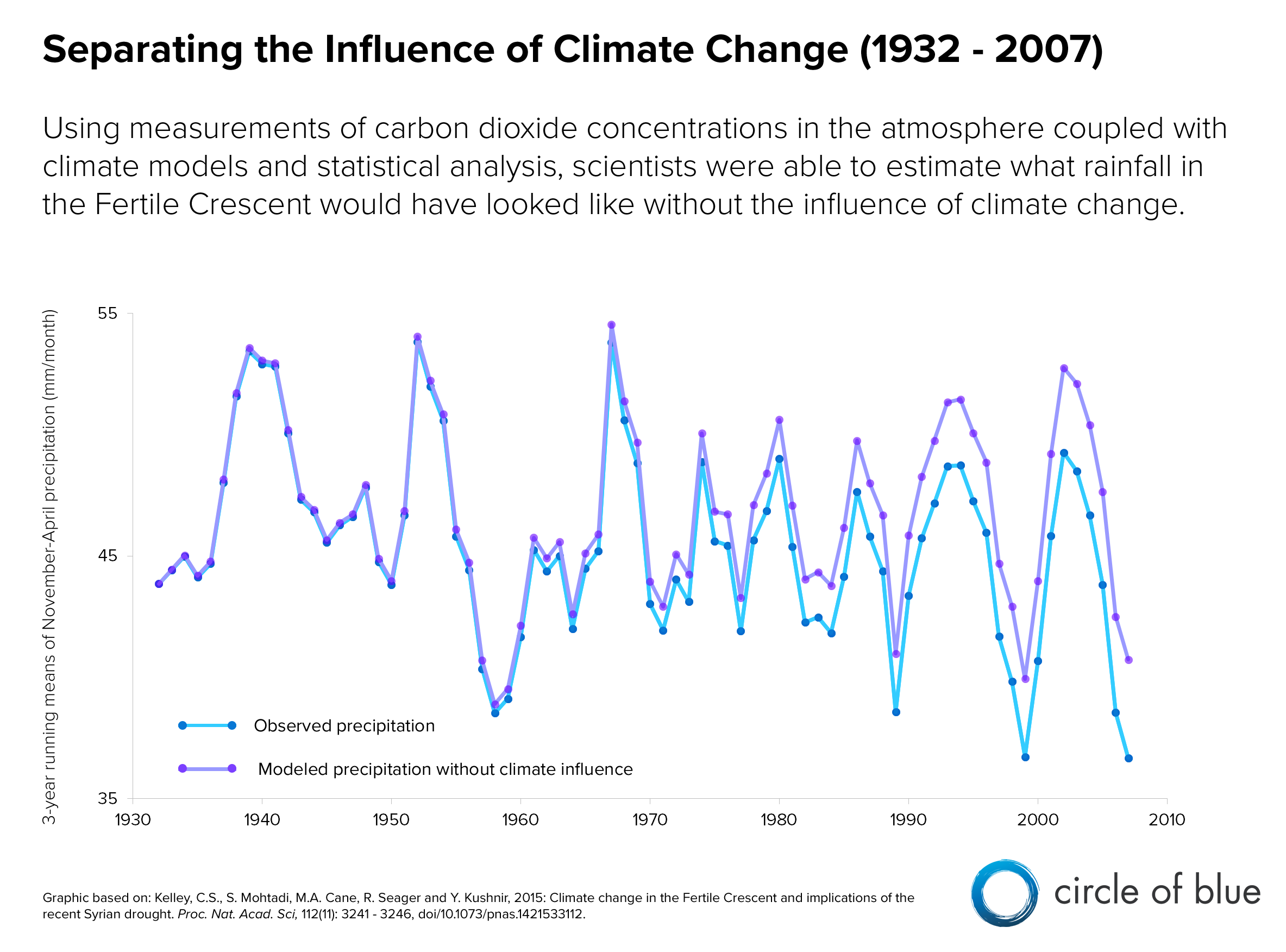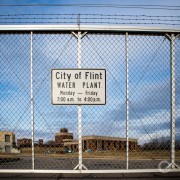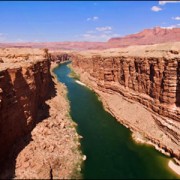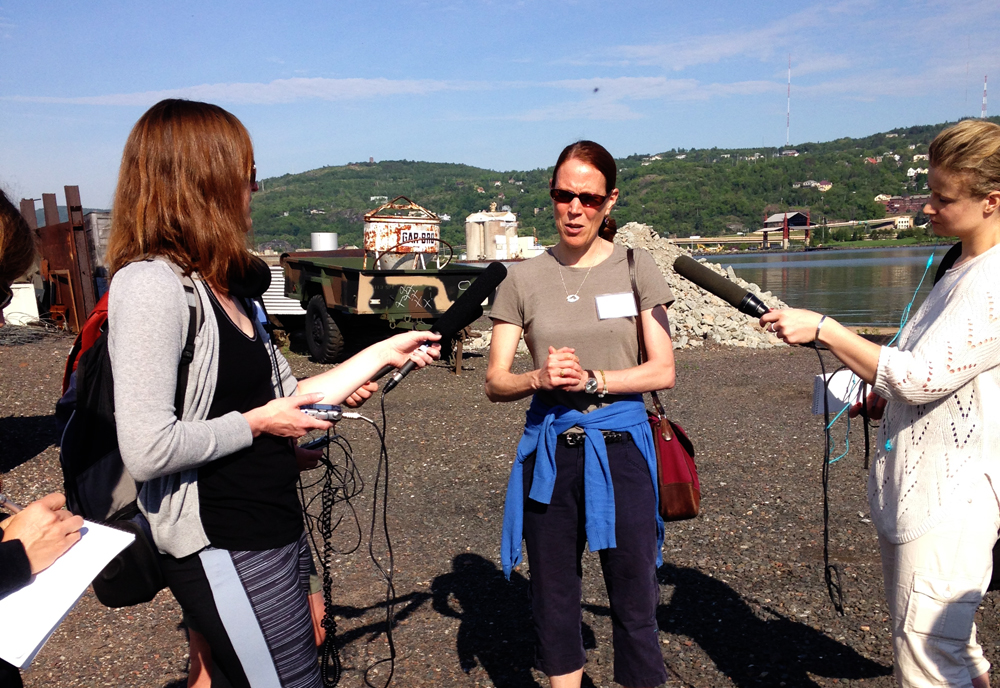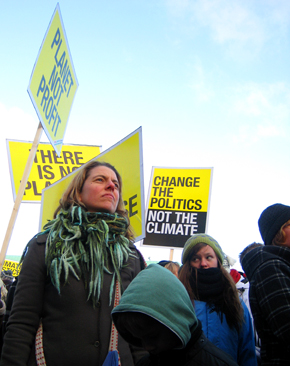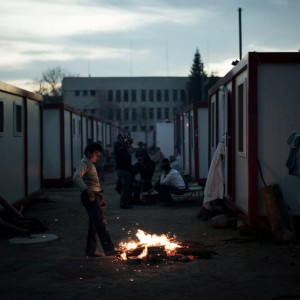Infographic: Syria Drought and Climate Change
Winter rainfall in the Fertile Crescent has declined 13 percent since 1931.
By Kaye LaFond, Circle of Blue
In March 2015, a study published in the Proceedings of the National Academy of Sciences laid out an argument for a climate-conflict link in Syria in three parts: First, a severe drought occurred that was made more likely by human-induced climate change; Second, a mass migration of drought-affected farmers fled to Syria’s cities; Third, the influx of migrants exacerbated unemployment and inequality in the cities, contributing to civic unrest over a nonresponsive government.
While most researchers agree the drought in Syria was severe, they dispute nearly all of the other steps in the sequence. This graphic focuses on the conclusion that climate change contributed to the drought in Syria between 2007 and 2010. The PNAS study found that precipitation during the winter months, when Syria receives most of its rainfall, was a third less in 2007 than the century-long average.
A separate study published this month in the Journal of Geophysical Research: Atmospheres found that the 15-year period between 1998 and 2012 was likely the driest in the last 900 years in the Levant, a region of the eastern Mediterranean that encompasses Syria.
The studies do not definitively claim that climate change caused the drought, but rather suggest that it made severe dry conditions more likely. The PNAS study noted that the entire Fertile Crescent region in the eastern Mediterranean has seen a 13 percent reduction in winter rainfall since 1931, and concluded that “No natural cause is apparent for these trends, whereas the observed drying and warming are consistent with model studies of the response to increases in greenhouse gases.” The recent study about drought in the Levant referred to climate change in more cautious terms:
“Our analysis does not directly inform our understanding of the magnitude of anthropogenic influence on recent droughts in the region…The results from our Levant analysis do, however, suggest that recent dry extremes are exceptional relative to natural variability during the last millennium. This offers some independent support for recent studies concluding that anthropogenic climate change has had a significant influence,” the study’s authors wrote.
For a high-resolution version of the infographic as a whole, click here.
is both a scientist and a journalist, she holds an MS in Environmental Engineering from Michigan Technological University, and she brings proficiency in ESRI’s ArcGIS mapping software.

